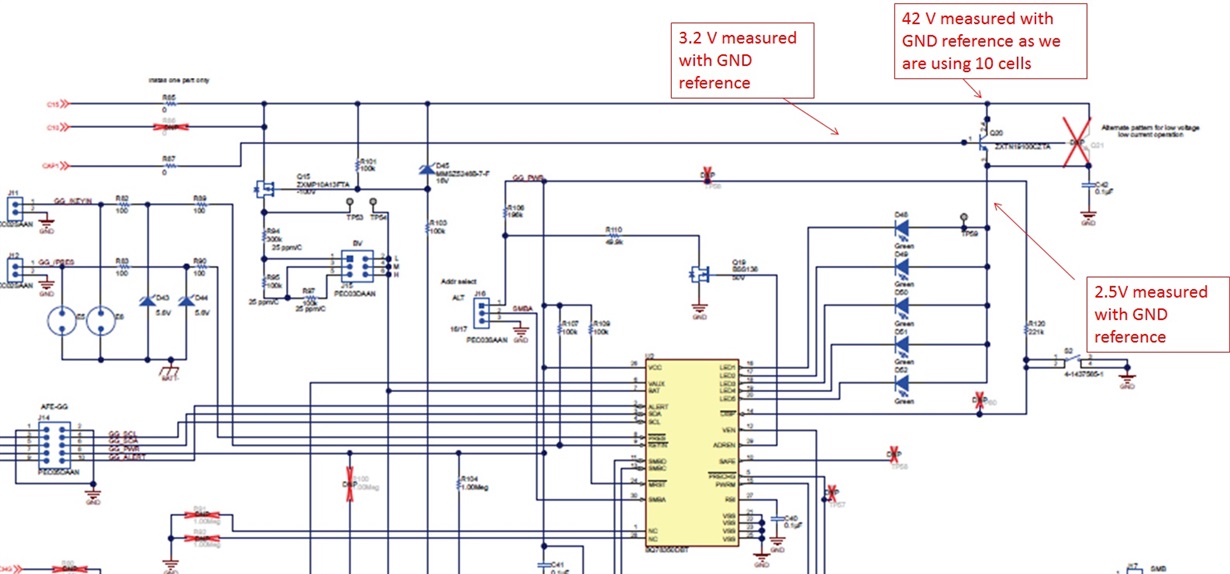Other Parts Discussed in Thread: BQ78350, BQ78350-R1
Hi,
Please find the below attached image.Figure 36. bq76940EVM Schematic Diagram Gauge
I have measured voltage at Q20 collector ,base,emitter. The voltage at collector is 42V with GND reference as we have connected 10S cells max voltage is 42V, thats fine and voltage at base is 3.1V its coming from the CAP1, measured with GND reference . but if we measure voltage at emitter then its 2.5V, measured with same GND reference.
how come the voltage at emitter is 2.5V ?once the Q20 gets turn ON then, whatever voltage at collector its should flow to emitter excluding diode drop.
i.e: Voltage at collector 42V and emitter voltage should be 41.3V (0.7 diode drop normally)
1)why the 2.5V is coming in Q20 emitter?
2)BQ78350 has internal resistor for LED drive?(pin 16 to 20)


